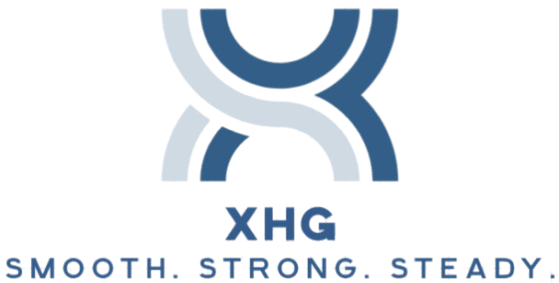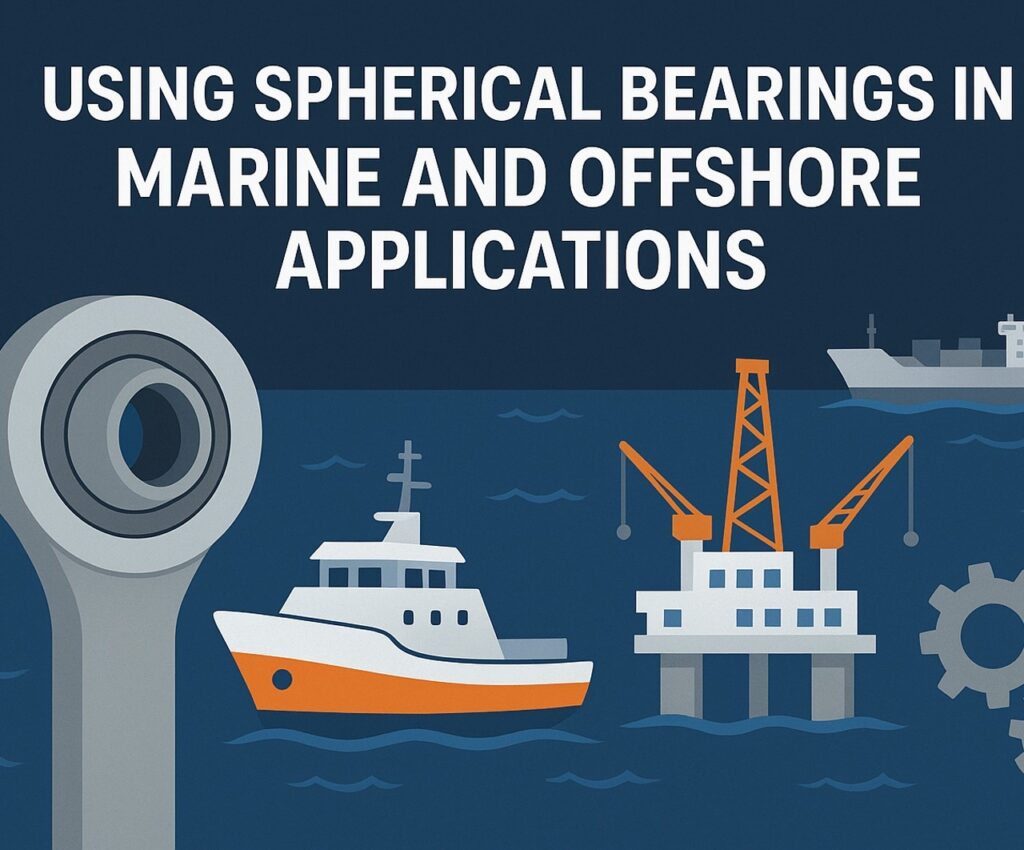Marine engineering demands resilience, precision, and durability under some of the harshest operating conditions on Earth. That’s why components like the spherical roller bearing, spherical roller thrust bearing, and spherical thrust bearing are crucial in this environment. These bearings are specially designed to handle heavy loads, misalignment, and corrosive exposure, making them the backbone of reliable motion systems in ships, oil platforms, and offshore rigs. Know More
Why Spherical Bearings Matter in Marine Systems
In a marine or offshore setting, equipment is subjected to a unique combination of stresses: high axial and radial loads, constant vibration, shock loading, corrosion, and temperature extremes. This is where spherical roller bearings, spherical roller thrust bearings, and spherical thrust bearings come into their own.
These bearings can accommodate angular misalignment while supporting heavy-duty loads. The spherical geometry of the raceway and rolling elements allows the bearing to rotate freely even when the shaft is misaligned with the housing. This reduces the risk of equipment failure due to mounting imperfections, structural distortion, or thermal expansion.
Types of Spherical Bearings and Their Roles
1. Spherical Roller Bearing
A spherical roller bearing supports both radial and moderate axial loads. It’s ideal for rotating shafts in propulsion systems, winches, and gearboxes. Its ability to self-align helps compensate for shaft deflection and mounting errors, making it perfect for marine propulsion.
2. Spherical Roller Thrust Bearing
A spherical roller thrust bearing is designed specifically for high axial loads. These are commonly used in vertical shaft applications like deck cranes, rudder systems, and azimuth thrusters. The bearing’s construction enables it to take extreme thrust while managing limited radial loads.
3. Spherical Thrust Bearing
A broader category, the spherical thrust bearing can include various configurations but is generally intended for axial loads where alignment issues are a concern. These are often found in mooring systems, cable reels, and subsea equipment.
Benefits in Marine and Offshore Use
The benefits of using spherical roller bearings, spherical roller thrust bearings, and spherical thrust bearings in marine settings include:
- High Load Capacity: Supports heavy machinery even under dynamic loads.
- Self-Aligning: Ideal for environments with shaft deflection or misalignment.
- Corrosion Resistance: With appropriate materials and coatings, these bearings withstand saltwater and humidity.
- Shock Load Tolerance: Critical in offshore winches, cranes, and drilling platforms.
- Long Service Life: Reduces maintenance intervals and improves uptime.
Creative Applications in Marine and Offshore Equipment
Here are some innovative ways engineers are using these high-performance bearings:
1. Floating Wind Turbines
Offshore wind turbines use spherical roller bearings in yaw and pitch mechanisms to handle variable wind loads and constant sea movement.
2. Dynamic Positioning Systems
In oil and gas exploration vessels, spherical thrust bearings enable responsive, precise thrust vectoring through podded propulsion systems.
3. Deck Cranes and Lifting Systems
The high axial load capacity of spherical roller thrust bearings ensures reliable lifting performance under harsh weather conditions.
4. Subsea Robotic Arms
Articulated joints benefit from self-aligning spherical thrust bearings that reduce wear caused by movement in turbulent underwater environments.
5. Anchor Handling Tug Supply (AHTS) Vessels
Bearings in the winch drums and sheaves use spherical roller bearings to deal with variable tension loads.
Engineering Considerations
Selecting the right bearing requires an understanding of operational demands. Here’s what engineers consider when designing with spherical roller bearings, spherical roller thrust bearings, or spherical thrust bearings:
- Load Profiles: Determine the ratio of radial to axial loads.
- Speed Ratings: Must handle both continuous and peak RPM.
- Environmental Exposure: Bearings must resist salt, sand, biofouling, and temperature variation.
- Mounting Constraints: Misalignment compensation is key in tight quarters.
- Maintenance Accessibility: In remote locations, reduced maintenance is a huge benefit.
Advanced Materials and Coatings
To survive marine environments, modern spherical roller bearings and spherical thrust bearings feature:
- Stainless Steel or High-Nickel Alloys: For core components.
- Ceramic Coatings: To minimize electrical arcing and wear.
- Polymer Seals: Keep contaminants out.
- PTFE Liners: In maintenance-free configurations.
These material innovations make bearings more resilient, especially when offshore maintenance is difficult or dangerous.
Smart Bearings: The Digital Edge
Some next-gen spherical roller thrust bearings now come equipped with:
- Embedded Sensors: Monitor vibration, temperature, and load in real-time.
- Wireless Data Transmission: Enables remote monitoring from control rooms.
- Predictive Analytics: AI-driven tools forecast wear patterns and suggest replacement windows.
This tech is especially valuable on offshore rigs, where unscheduled downtime is expensive and dangerous.
Case Study: FPSO Mooring Systems
A Floating Production Storage and Offloading (FPSO) unit operates under continuous load from wind, waves, and tides. Engineers replaced traditional bushings with spherical thrust bearings in the turret mooring system. The result:
- 35% reduction in friction losses
- 50% longer service intervals
- Greater stability under multidirectional forces
This change improved uptime and reduced emergency maintenance calls during storm conditions.
Installation and Maintenance Best Practices
- Correct Lubrication: Use marine-grade grease or oil with corrosion inhibitors.
- Regular Inspection: Especially in load-critical components like cranes.
- Avoid Overloading: Even though they’re tough, consistent overloading shortens lifespan.
- Proper Sealing: To block salt spray and fine particles.
- Alignment Checks: Even self-aligning bearings have limits.
Following these practices ensures that spherical roller bearings and their thrust counterparts live up to their design potential.
Environmental and Regulatory Considerations
- Eco-Friendly Lubricants: Increasingly required in sensitive marine zones.
- Bio-Compatible Materials: For subsea exploration.
- Regulatory Compliance: IMO and API standards often dictate bearing selection.
These considerations affect bearing design, selection, and lifecycle planning.
Conclusion: Reliability Where It Counts Most
When it comes to the relentless forces of the sea, few components are as mission-critical as the spherical roller bearing, spherical roller thrust bearing, and spherical thrust bearing. Their ability to manage heavy loads, absorb misalignment, and endure corrosive environments makes them indispensable in marine and offshore operations.
As equipment grows more automated, intelligent, and high-performing, the demand for robust bearing systems will only increase. The spherical bearing’s unique combination of simplicity, strength, and adaptability ensures it will remain a cornerstone of marine engineering for years to come.
Whether you’re designing a floating wind farm, an advanced underwater drone, or a heavy-lifting deck crane, choosing the right spherical thrust bearing could mean the difference between operational success and failure. In the sea’s unpredictable embrace, that reliability is everything.

